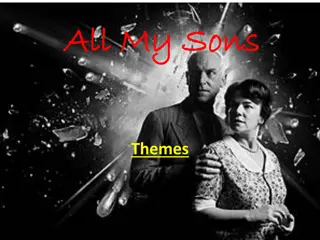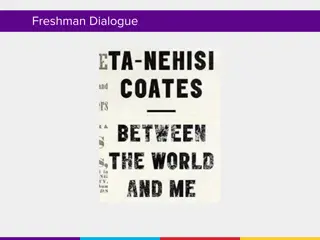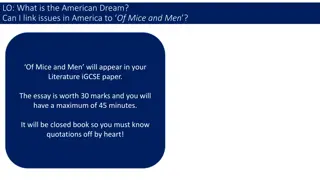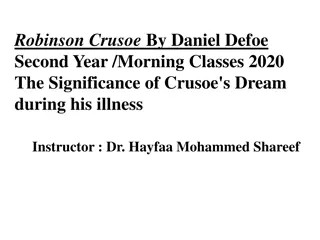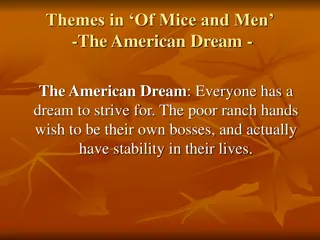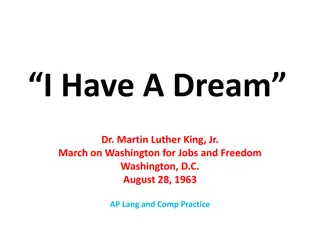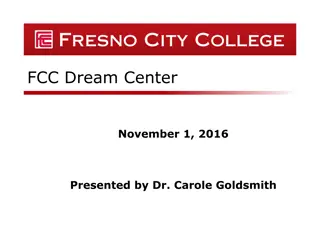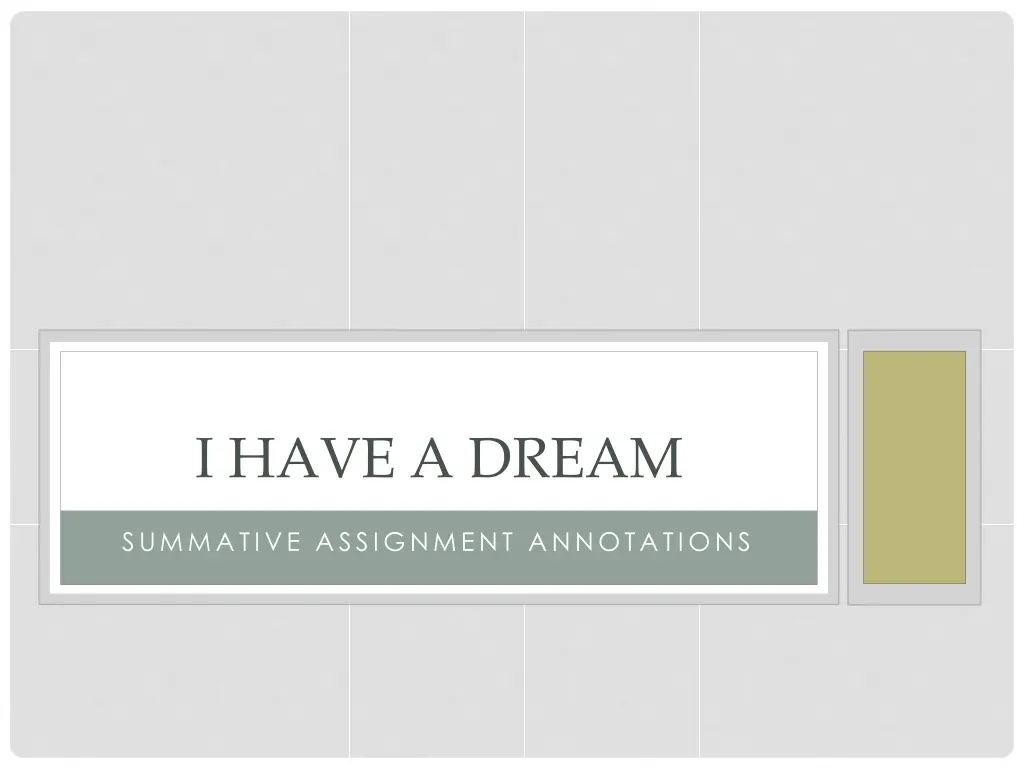
Structured Analysis of MLK's Speech: Group Annotation Activity
Engage students in a structured annotation activity to deeply analyze Martin Luther King Jr.'s speech. Explore repetitions, tone and diction, and comparisons through collaborative group work for a comprehensive understanding of the impactful message.
Download Presentation

Please find below an Image/Link to download the presentation.
The content on the website is provided AS IS for your information and personal use only. It may not be sold, licensed, or shared on other websites without obtaining consent from the author. If you encounter any issues during the download, it is possible that the publisher has removed the file from their server.
You are allowed to download the files provided on this website for personal or commercial use, subject to the condition that they are used lawfully. All files are the property of their respective owners.
The content on the website is provided AS IS for your information and personal use only. It may not be sold, licensed, or shared on other websites without obtaining consent from the author.
E N D
Presentation Transcript
I HAVE A DREAM SUMMATIVE ASSIGNMENT ANNOTATIONS
SOAPSTONE Watch the video that is posted to my webpage and fill out a SOAPStone organizer. Watching the TV broadcast gives them insight into the Speaker, Audience, and Occasion that is not apparent in the text alone.
GROUP UP! Get into groups of 2-3 students for a structured annotation of the text. Stay in the room. You ll need to get directions for each ten-minute segment of the annotations.
FIRST 10 MINUTES: Look for repetitions in the speech (there are a lot of them). Use the 51 rhetorical terms sheet to try to correctly label the repetitions you are finding. Also, discuss the effect of the repetitions you find. Repetitions Anaphora Alliteration Parallelism Parallel Structure Repeated Imagery
SECOND 10 MINUTES: Each group should choose three sections from the speech for an analysis of tone and diction. Circle charged words and discuss the tone MLK has in each of the three chosen sections. How does King s word choice change depending on the topic?
THIRD 10 MINUTES: Look for the comparisons in the speech (there are a lot of them). Use the 51 rhetorical terms sheet to try to correctly label the repetitions you are finding. Also, discuss the effect of the comparisons you find. Comparisons Metaphor Extended metaphor Simile Allusion Onomatopoeia Antithesis Personification Paradox Analogy


![❤Book⚡[PDF]✔ Spaceplane HERMES: Europe's Dream of Independent Manned Spaceflight](/thumb/21517/book-pdf-spaceplane-hermes-europe-s-dream-of-independent-manned-spaceflight.jpg)


